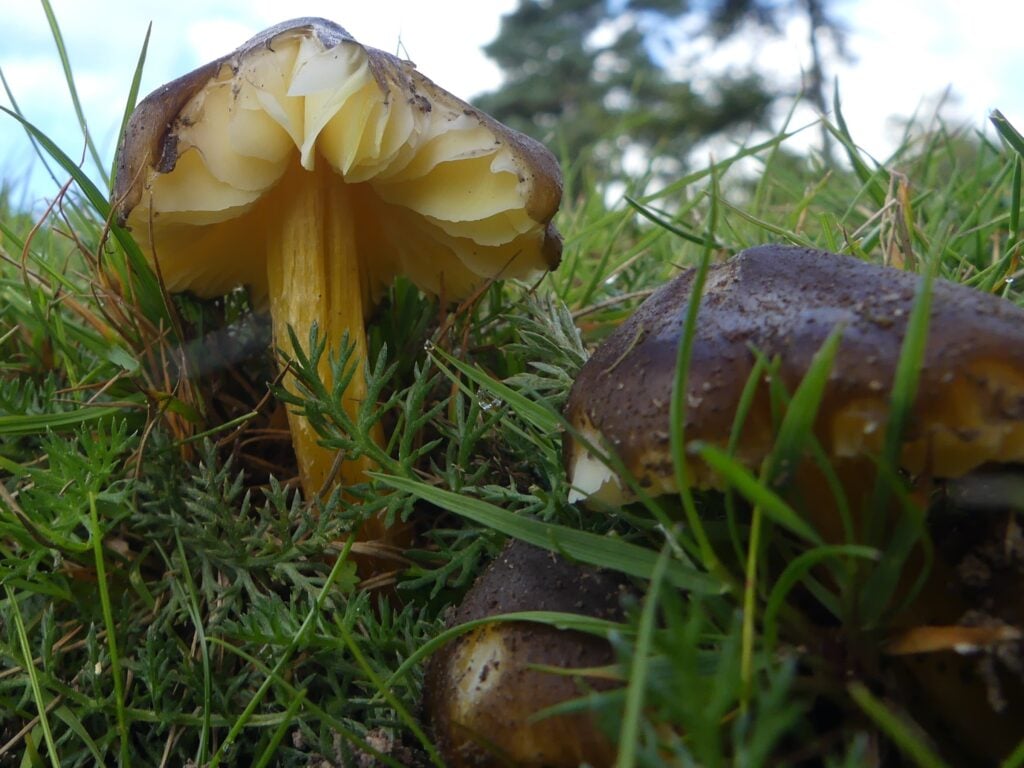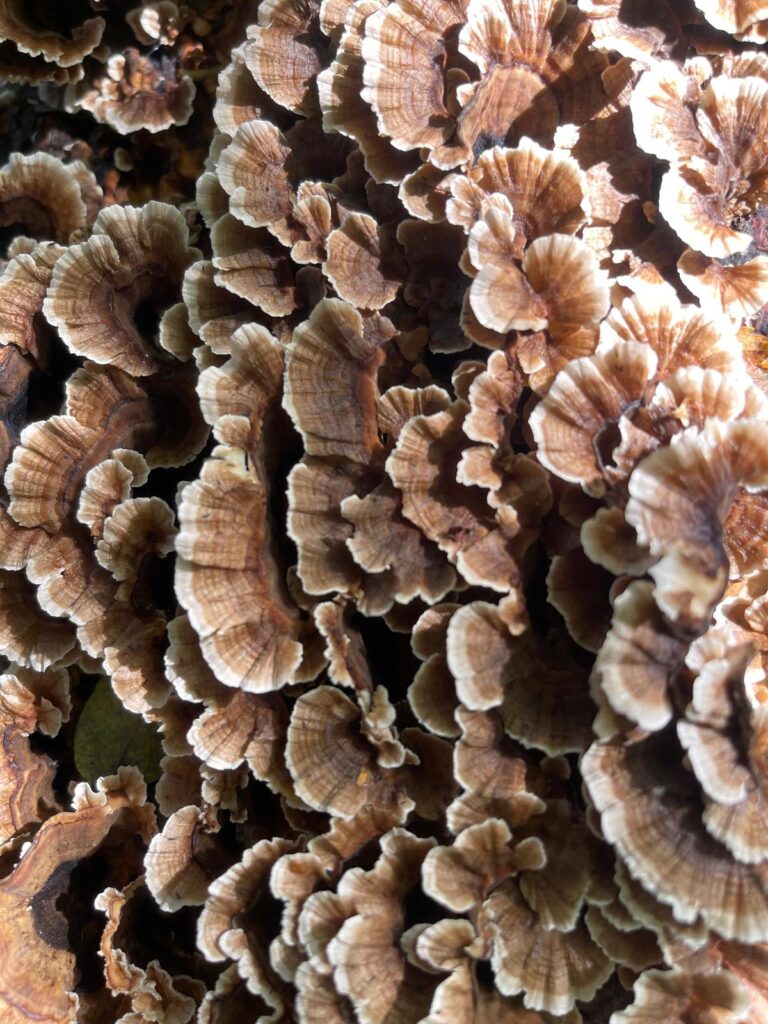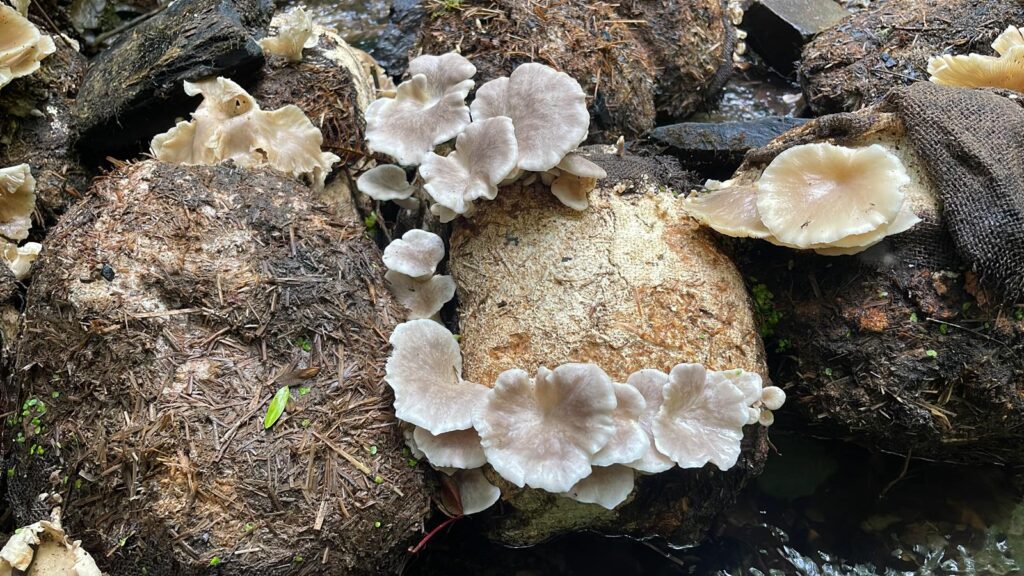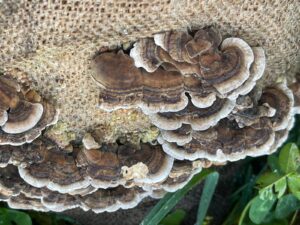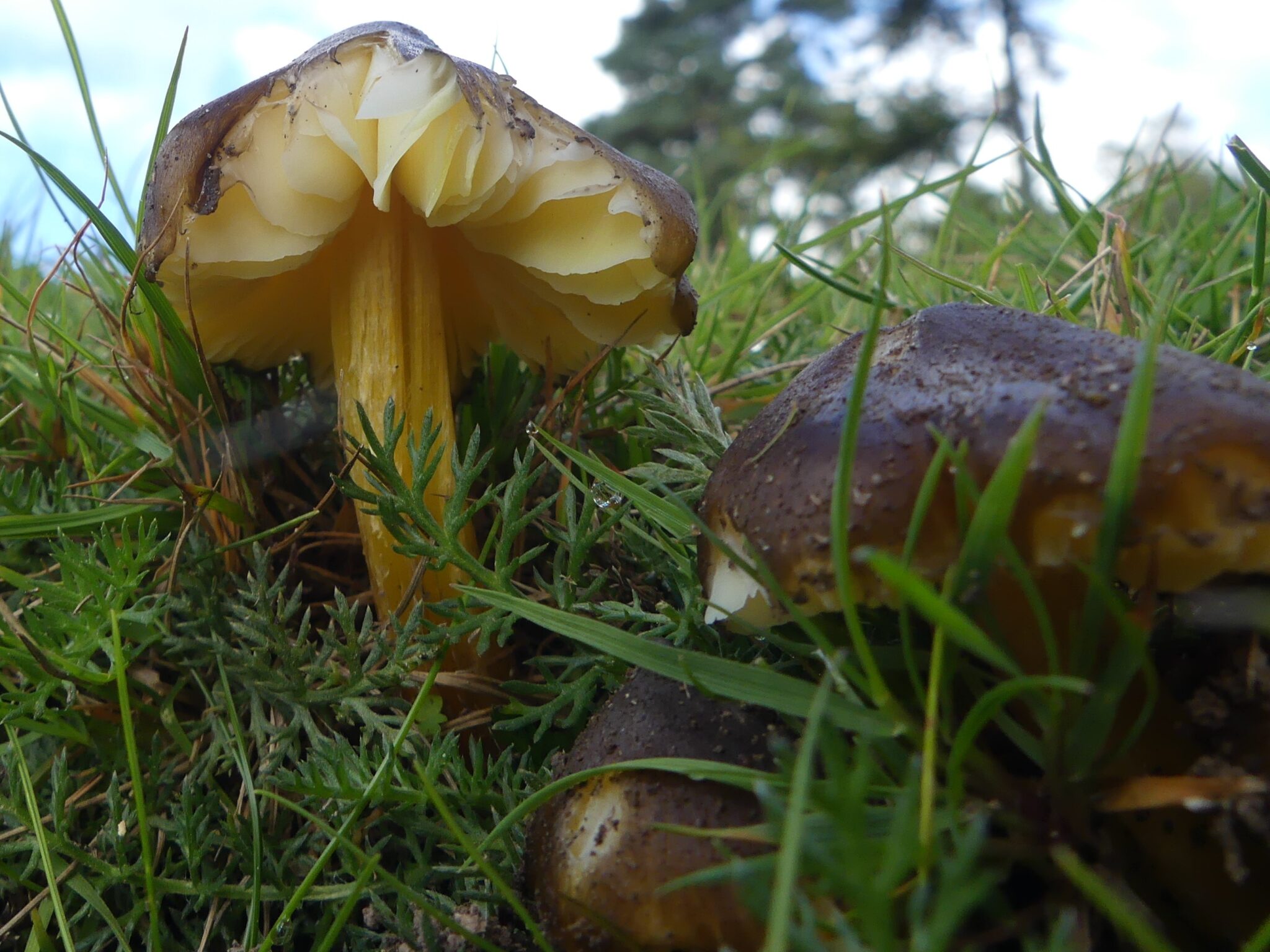Fungi are not plants, animals or bacteria. They come in a wide variety of forms, from microscopic yeasts to colourful waxcaps in meadows, toadstools in woodlands and huge bracket fungi on decaying trees.
However, they have a few key things in common:
- They all need to absorb nutrients from other organic material. They often live on dead organic matter and play a crucial role in breaking it down and recycling nutrients.
- They grow either as single cells (yeasts) or as long threads called hyphae. Hyphae grow and branch out forming networks called mycellium. These networks are generally hidden in soil, wood or other organic material.
- In mycorrhizal fungi the hyphae grow around and form a relationship with plant roots. The hyphase help plants to absorb water and nutrients while the plant provides the fungus with sugars.
- Densely packed hyphae form the fruiting body of a fungus. These are the larger parts that we can see such as mushrooms, puffballs, bracket fungi (on trees) or toadstools. Fungi reproduce when the fruiting bodies produce spores that are spread by wind, water or animals.
Fungi grow best in damp, shady places in all environments including woods, grasslands, heaths and gardens. Many fungi only grow on specific hosts, so areas with more species of plants and animals tend to have more fungi.
Around 15,000 species of fungi have been recorded in the UK with an additional 11,000 microscopic fungi and new discoveries that are made each year. 2,000 of the UK’s 4,000 toadstool species are found in Devon. However, large areas of Devon haven’t been surveyed and the total number of species is not known and will probably never be known.
Despite their ecological importance, fungi are under-represented in conservation efforts. The International Union for Conservation of Nature’s national list of threatened species includes only around 275 British fungi species, although the list is currently under review.
Whether you’re spotting classic toadstools or delicate coral fungi, these organisms are not just beautiful — they’re vital to the health and resilience of our ecosystems.
The largest organism in the world is a fungus. Known as the humongous fungus (Armillaria ostoyae) it grows in the Blue Mountains of Oregon in the USA and is estimated to span 2,385 acres and weigh 35,000 tons. It is largely a vast network of underground hyphae.

